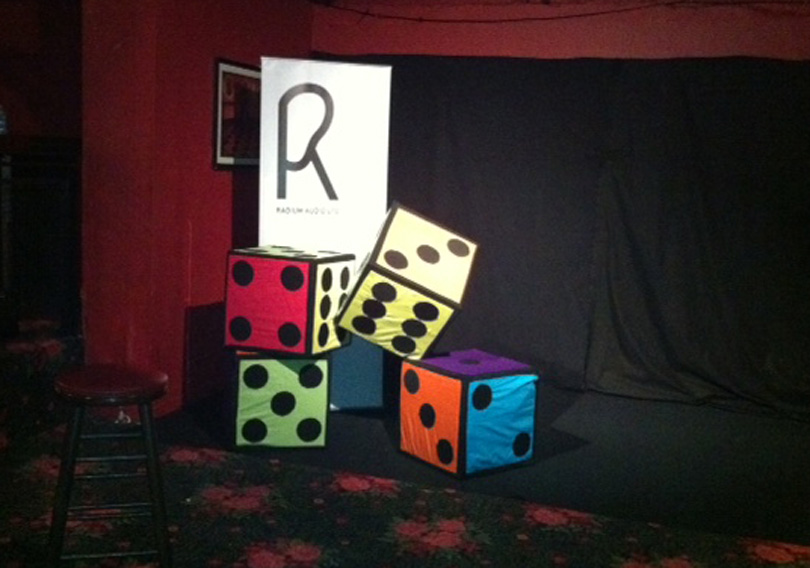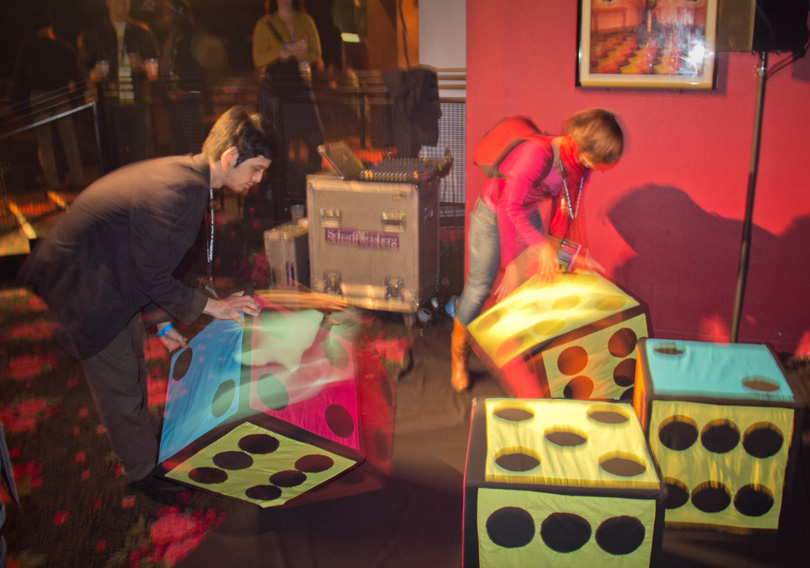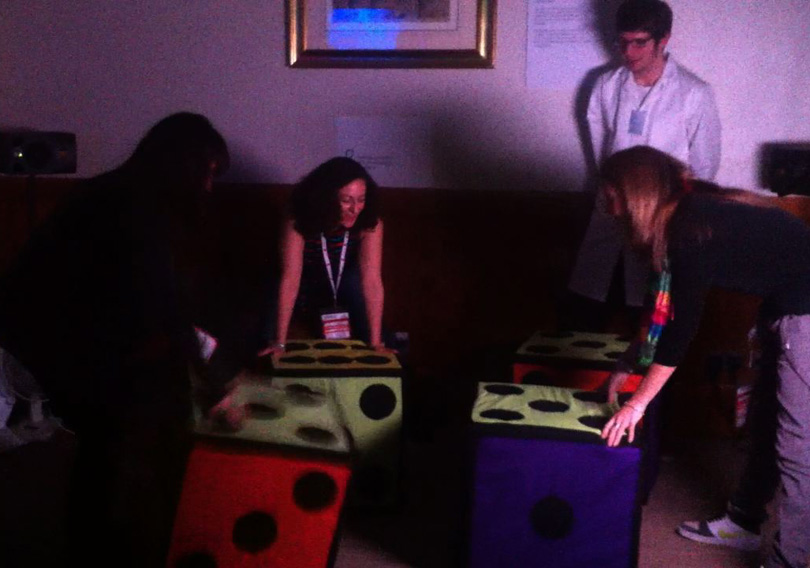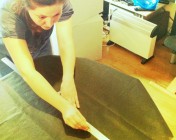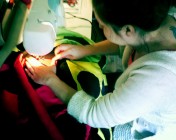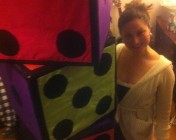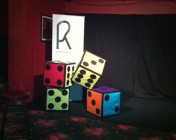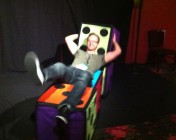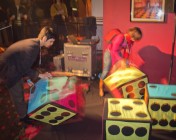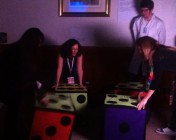Disco Dice
Design & Build by Radiumphonic Lab
A tv programme about how learning an acoustic musical instrument is highly beneficial for young children on many levels inspires something of an internal dialogue in the Radiumphonic Lab about how we might go about creating an educational interactive music and sound experience in the physical world for that age group. We decide to do exactly this, to challenge our interactive and product development skills, and to potentially add to our Radiumphonic Live Lab experience.
After careful consideration, we arrive at a hitlist of all the features we want to build into the experience. These include:
- An element of musical education
- An exercise in physical co-ordination
- Development of musical and listening perception
- Learning to co-operate with others
- A fun and engaging experience
While the documentary we’d watched focused very much on traditional acoustic instruments played one at a time, we are interested to see if we can find a way to bring the young player into the world of modern, electronically produced music in a way that is accessible and understandable for them, and teach them a little about it at the same time. To achieve our hitlist we will need to create sizeable physical objects which are manipulated in the game, enabling multiple players to simultaneously connect with, shape and control sound and music. There must be strong visual and sonic engagement, and allow the players to explore elements of electronic music production working as a team, and physically engaging with the objects and the environment. So we come up with the idea to have our young players remix music tracks in the physical world by tossing and turning giant dice in combination with each other. We decide to focus on disco tracks because these are simple to create electronically and highly accessible with very catchy melodies which are quickly memorable, and also the rhythms encourage physical movement and dancing.
The visual look of the dice is very important, as this is what will initially draw players to want to pick them up, explore them, and see what they do. Our visual designer, Jovanna Mendes de Souza, imagines and creates a highly engaging look with brightly coloured fabrics and giant black dots, and we create a schematic which allows the electronics and other interactive components which activate elements in the physical environment to be enclosed and hidden in the centre of each dice, surrounded by a solid but non harmful and low impact material, and encased by the brightly coloured covers Jovanna will make.
We then need to identify disco tracks which are very distinctive from each other, yet play out in the same key, so that it is possible to mix them in different combinations as part of the game. Six tracks are identified for use in the game, and we decide that we will create four layers for each track
- Vocals
- Melody
- Bassline
- Drums
And create four dice, each of which to control one of these elements. Each of the numbers on the six sided dice will control one of the six track layers we will program into the game.
In this way, young players will learn about the four main elements making up any current produced music track. If they pick up the vocals dice, they can turn it many different ways to change between and listen to six different vocal options playing against the existing melody, bassline, and drums tracks. If more than one dice is moved at once, then more than one of the four musical elements will change at once. So players can manipulate the dice to mix the different layers together, to find a song they may recognize, or just to create a combination that they really like.
After we physically build and program the control compartments for the four dice, we enclose them and place inside giant foam cubes. We have the visual design of the dice made into zip covers, which can be removed for cleaning. We program the interactive sensors to connect with the computer interface which controls playout over the speakers which we mount to surround the play environment … and the game begins!
Much as we’d originally created the design for young children, we have quite a lot of fun playing with it ourselves. A throw, turn or roll of each dice changes between the six different disco tracks depending upon which number the dice falls upon. Depending on which dice is moved, we change the vocals, melody, bassline and drum elements of the song which is playing. We take our Disco Dice experience on the road, both to the F5 Creative Festival in New York, then some months later to Promax in London as part of our Live Lab experience. It’s really interesting watching how different people engage with the game, from the tentative individual who gingerly picks up a dice and turns it this way and that, to see what happens, to the compadres who jump in immediately, a person on each dice, to turn them over simultaneously in rhythm, creating their own instant remixes.
Listen to PETER Describe the project: IN LINE PLAY




